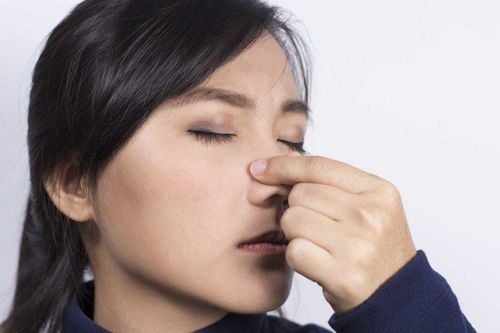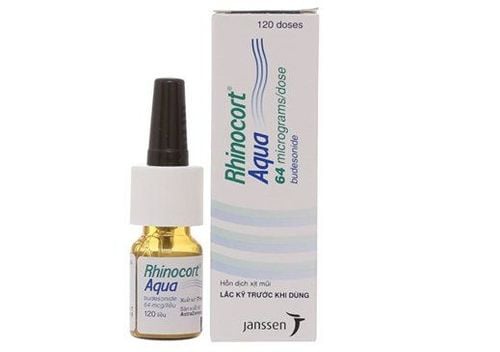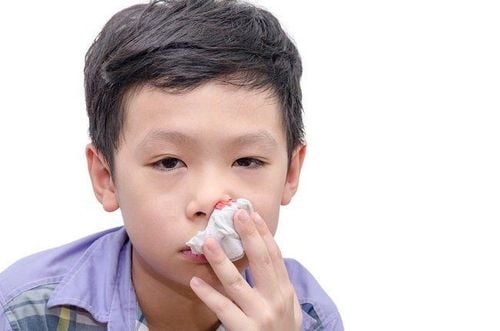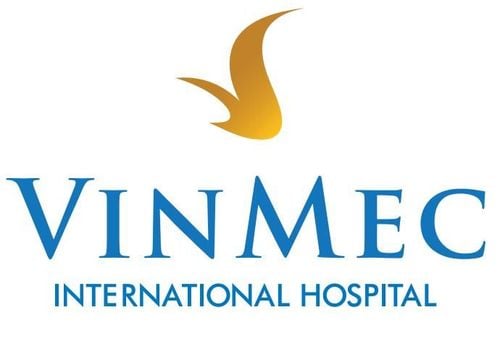This is an automatically translated article.
Nosebleed (nosebleed) is a disease of the ear - nose - throat area quite common in children. Most cases of nosebleeds in children will clear up on their own and can be managed at home. In the case of severe nosebleeds in children with a high frequency, it is necessary to take the child to a doctor for timely diagnosis and treatment.
1. What is a nosebleed?
Nosebleeds occur when small blood vessels located in the nose burst and bleed. This is common in children 2-10 years old. Nosebleeds are divided into 2 types:
Anterior nosebleeds: Account for about 90% of cases of nosebleed patients. Anterior nosebleeds originate from the front of the nose, specifically the Kiesselbach plexus in the lower part of the nasal septum. This area has many small blood vessels, which are easily broken when blowing the nose or there is a local injury due to blowing the nose, rubbing the nose. Nose bleeds mainly to the front, rarely down to the throat, persistent bleeding with a small amount and usually stops when applying first aid measures; Posterior nosebleeds: In about 10% of cases, involve blood vessels higher and deeper in the nose. Posterior nosebleeds are dangerous and difficult to control and require medical attention. This condition is more common in people who are elderly, have high blood pressure, or have trauma to the nose and face. Posterior nosebleeds often flow on both sides, drain to the back, go down the throat, flow in large amounts and can be life-threatening.

Chảy máu mũi thường xảy ra ở trẻ từ 2-10 tuổi
2. Causes of nosebleeds in children
Weather: Nosebleeds often occur in the cold season, in a dry place with low humidity. The heating of the oven is too hot, which dries and damages the nasal mucosa, causing nosebleeds. In addition, when it is hot, the blood vessels in the nose dilate, causing the child to feel itchy, often picking his nose to break blood vessels causing nosebleeds; Trauma: Nose picking, foreign objects falling into the nose, hitting hard objects; Regional pathology: Nasal sinus surgery, chronic sinusitis, respiratory infections, invasive cancer, granulomatous disease,...; Systemic diseases: Infections, high blood pressure, blood clotting disorders, atherosclerosis, malignancies, liver disease, consequences of chemotherapy,...; Other causes: Vitamin C deficiency, genetic diseases related to changes in the structure of blood vessel walls, vasculitis, etc. increase vascular permeability leading to nosebleeds.
3. How to handle nosebleeds in children
Identify the side of the nose bleeding: When detecting a child has a nosebleed, parents first do not let the child continue to rub his nose. After that, clean the nostrils on both sides, let the baby's head slightly forward to let the blood flow to determine which side is bleeding. At the same time, the bowing position also prevents the nose blood from flowing back to the child's throat, causing vomiting;
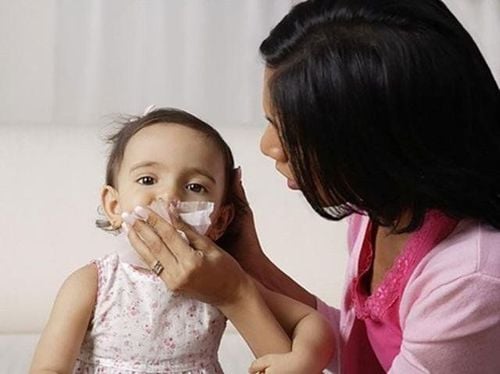
Lau sạch cửa mũi và để trẻ hơi cúi đầu về phía trước
Stop bleeding: Put your finger on the child's nose against the nasal septum, slightly tilt the child's head up, hold for about 5 - 10 minutes to stop bleeding. Take care not to squeeze the bridge of the nose or press only one side of the nose because this will cause pain and cannot help stop the bleeding. At the same time, do not release your hand too soon or many times because it will cause prolonged bleeding because a blood clot has not been formed to prevent bleeding; Care after stopping bleeding for the child: Let the child rest in a static state. If the nosebleed is still bleeding and is running down the throat, place the child on his side, instruct the child to use his tongue to push the blood out. Parents should pay attention not to let children swallow nosebleeds because it is likely that the child will be poisoned, vomiting, stomach pain and discomfort. Timely take the child to the medical facility if the following signs are present:
After first aid, the blood continues to flow; Bleeding from the nose that repeats many times in a short time; Blood flows more and more rapidly; Nosebleeds due to severe trauma; The child has a fever or a rash caused by nosebleeds; Children are tired, dizzy, short of breath, heart palpitations; The child vomited blood.
4. Measures to prevent nosebleeds in children
To prevent nosebleeds in children, parents need to find out what causes this condition and take appropriate measures. Specifically:
Ask children not to pick their nose, rub their nose, or insert foreign objects into their nose if the nosebleed is caused by trauma or foreign objects; Give children enough water to drink, especially on hot days, when exercising or doing outdoor activities; Children should not be left sitting for too long in an air-conditioned room because the dry air will easily cause nosebleeds. If the child sits or sleeps in an air-conditioned room, use a nebulizer or place a small basin of water to humidify the air in the room;

Trẻ ngủ lâu trong phòng điều hòa dễ dẫn tới chảy máu cam
Keep the nasal mucosa moist: Spray or drop the nose with physiological saline (especially important for children who often have colds, nasal congestion or allergies). In addition, a little vaseline cream can be applied to the anterior part of the nasal septum to avoid the risk of the nasal mucosa being damaged and causing bleeding; Feed and drink vitamin C-rich foods such as fresh fruit or vitamin C supplements if the cause of the nosebleed is vitamin C deficiency; Thorough examination and treatment of rhinitis for children because this is one of the common causes of nosebleeds; In addition to the above reasons, nosebleeds in children can also be caused by many other causes. Therefore, if the above preventive measures are taken and the child still has frequent and frequent nosebleeds, parents should take the child to an ear, nose and throat specialist for accurate diagnosis and treatment. timely and effective treatment.
Pediatrics department at Vinmec International General Hospital is the address for receiving and examining diseases that infants and young children are susceptible to: viral fever, bacterial fever, otitis media, pneumonia in children, ... With modern equipment, sterile space, minimizing the impact as well as the risk of disease spread. Along with that is the dedication from the doctors with professional experience with pediatric patients, making the examination no longer a concern of the parents.
Customers can directly go to Vinmec Health system nationwide to visit or contact the hotline HERE for support.




